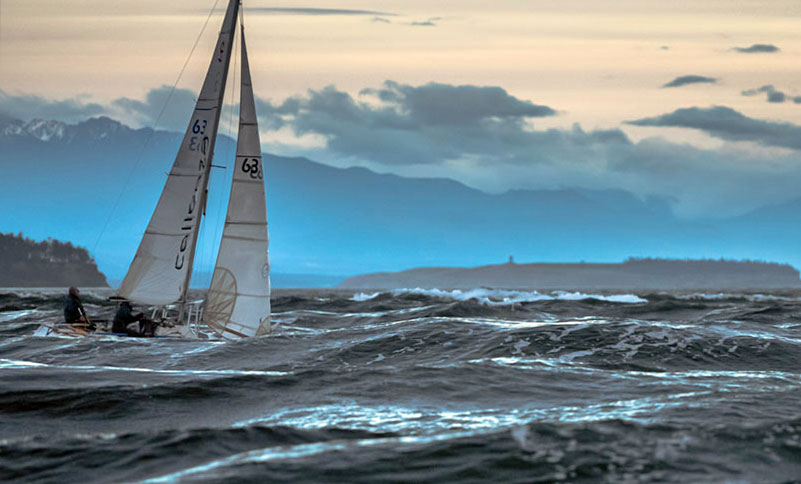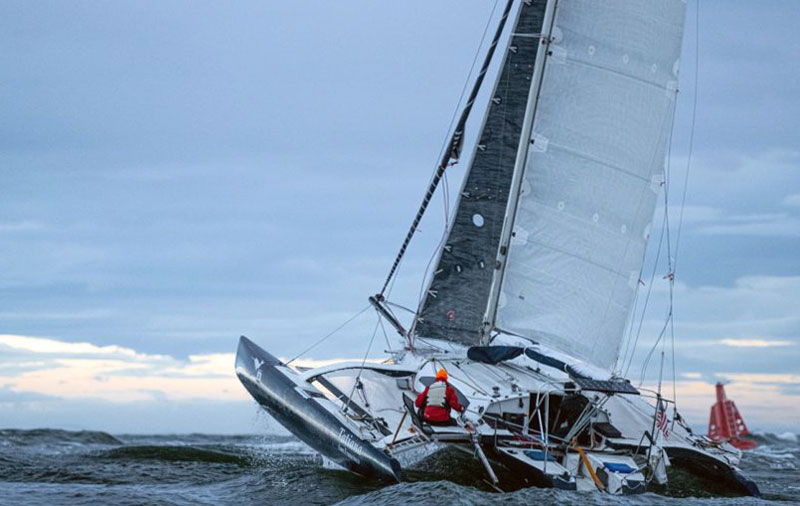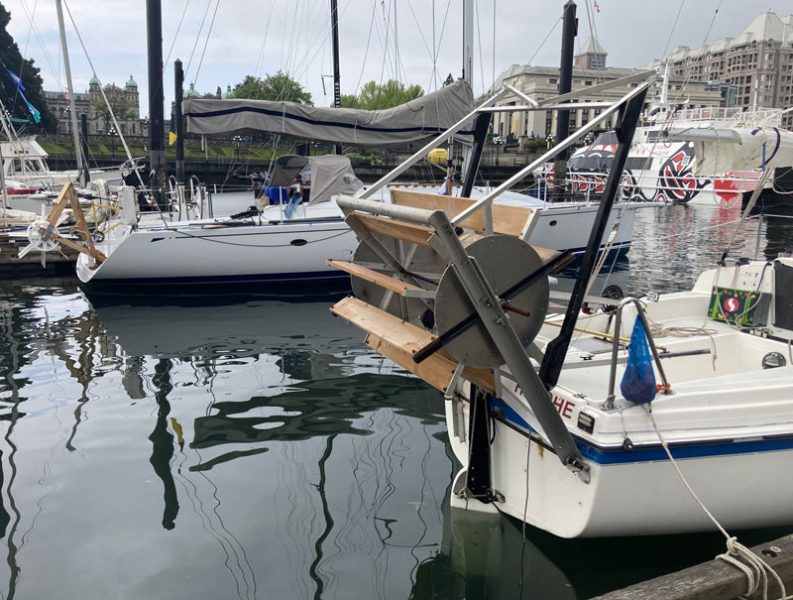
R2AK Stage 1 Spills, Chills and Thrills
On Sunday, the day before the Race to Alaska started, R2AK Race HQ extended the time window by a full 24 hours for racers to complete Stage One and get to Victoria. Why? The triple threat of wind, tide and the knee-knocker that is the Strait of Juan de Fuca.
Monday, Day 1
Forty-ish rough-water miles separate the Port Townsend starting line from the welcome embrace of Victoria’s inner harbor. On a good day the Strait of Juan de Fuca crossing is unnerving at best for any vessel designated smaller than “ship.” On Monday, the Strait lived up to at least 100% of its reputation. It was brutal.
A strong tidal flow crashing into 30+ knots of wind raging in from the west created a sea state that surprised novice and veteran racers alike. “We’re out here all the time, and this was the worst we have ever seen,” said the Coast Guard captain on station. With standing-wave heights roughly equal to the length of the smallest race boats, things went beyond sporty to scary.

Stage One is the Proving Grounds: a way to test the judgment, vessels and skill of teams before they leave the warm embrace of civilization and life-saving resources, and venture into the remote coast of British Columbia. The Straits can be scary and big; the rest of the coast to Ketchikan is at least that, with the added layer that it is so remote that even with radio and satellites, no one will hear you scream. Stage One is designed to battle-harden your team to make sure you are ready.
The Fast, the Smart and the Broken
Monday’s Stage One did its job. Day 1 split the fleet into three parts. 1) The fast and robust made it across before the weather got the better of them. 2) Teams hugged US beaches to stay out of the worst of it. 3) Teams who ventured too far for the conditions. The fast, the smart and the broken.

Three capsizes and one snapped mast resulted in four rescues, two by the USCG and two by R2AK race support vessels, with at least one assist by a fast ferry. More equipment failures sent teams back to the beach or all the way back to Port Townsend. But everyone is OK.
Twenty or so teams waited for mellower weather to make the jump to the Canadian promised land. Team Pure and Wild got damned close to the Stage One record sailing their Seattle-based Riptide 44.
The Monday arrivals got a stern talking-to from the Canadian Coast Guard, to the effect of:
- Don’t be idiots.
- It’s a big coast and there aren’t that many of us. There’s more Coast Guard in the 40 miles of Stage One than the 700 of Stage Two. Make better choices.
- Wear a drysuit. Hypothermia is real, and we don’t search for bodies.
Tuesday, Day 2
About 10 teams split the difference between the safety of Port Townsend and the punishing passage to Victoria. They made a pit stop at Dungeness Spit, a five-mile-long, windswept refuge with a lighthouse, a house for the lighthouse keeper, and, on Tuesday, a small and active colony of temporary citizens in the Republic of Dungeness. Members of the Dungeness Lighthouse Society drove down to the beach at low tide to deliver muffins and pizza. In return, racers pitched in to rebuild a couple of walking trails.
Tuesday night offered the bouncy, sleep-killing remnants of the weather system. Day 3 saw a Strait of Juan de Fuca that was unrecognizable from the violence it had wrought on Day 1. Wind went from 30 to nearly negative, and seas were nonexistent — Godzilla downgraded to the Geico gecko.
Wednesday, Day 3
All 19 teams who set out Wednesday morning made it before the 5 p.m. cutoff. None got a louder cheer than Team Fire Escape. They brought up the rear in their Cal 20, with only minutes to spare.
R2AK Stage Two

Stage Two, the long haul to Ketchikan, started yesterday at high noon. Three teams have chosen to brave the Pacific Ocean (the west side of Vancouver Island), allowed for the first time this year, rather than the Inside Passage. Among them is Team Pure and Wild. Do you think they’re trying to win the prize for first to finish — $10,000 — as they did in 2017? Follow along on the tracker here.
